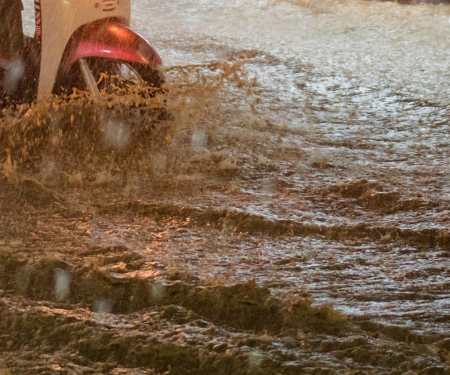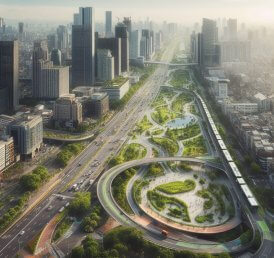Urban Flooding in Pakistan

By Rabiya Mukhtar
Floods are regarded as the most commonly occurring natural hazards. In general, natural flooding is attributed to the river bank overflow due to the melting of snow in the mountains or excessive rainfall. In the coastal areas, a storm surge may also cause inland water invasion. With the rapid and unplanned urbanization, a different not-so-natural type of flooding has emerged, known as Urban Flooding. Urban flooding is not just “flooding that happens in an urban area.” It can happen without any riverine and flash flooding or coastal storm surge. It can be a very localized event due to rain or any other source of water inflow into a city or town such that the impervious paved and cemented areas and the lack of an efficient water drainage system prevent the water from getting absorbed or drained. The soil on the limited unpaved surfaces is unable to absorb water after it becomes saturated. As a result, surface runoff is generated with nowhere to go. In most cases, the storm drainage system is non-existent and waste disposal is ineffective. All these factors contribute to urban flooding.
In recent years, urban flooding has disrupted the major cities of Pakistan especially Karachi. During August 2020, Karachi received rainfall of 484mm, which was the highest recorded monthly rainfall in the last 90 years. At one instance, there was 231 mm of rainfall within 12 hours, the heaviest rainfall in the history of Karachi. The mixture of rainwater and overflowed water from the nullah and drains invaded the city. Though the rainfall was undoubtedly humongous, it would be inappropriate to put all the blame on climate change alone that may had caused such an anomalous rainfall but not the disruptive aftermath. The fact of the matter is that Karachi did flood during 2019 as well when on July 30, 2019, up to 71 mm rainfall was recorded that chocked the socio-economics of the city altogether. Much of the land, roads, and even houses were flooded. Widespread inundation coupled with traffic jams, power outages, and incidents of electrocution was reported. In days to come, the stagnation of water could go on to cause outbreaks. At that time, the media was swift in blaming the government for lack of preparedness, and the government was blaming citizens for throwing trash into the sewage system. The suffering was shared. However, the magnified consequences of the 2020 flooding show that nothing happened after the 2019 flooding was over.
The question arises if the existing sewage system of Karachi sufficient even for regular non-rainy days? And after the urban flooding has been engulfing the city on an annual basis, is it justified for the government agencies to put the responsibility on the public or vice versa? Were the government agencies able to put workable contingency plans in place before the rains, and were the public proactively pursuing the betterment in the city’s flood risk management? Unfortunately, there are no satisfactory answers.
To resolve, we much understand that there is no quick fix. Urban flooding is a shared problem, and both the government and community participation are vital to devise a workable, sustainable, and long-lasting solution. Besides educating and involving the masses for a massive cleanup of the city, the government agencies must have contingency plans to handle such scenarios in the future by upgrading the existing rainwater drainage infrastructure. The use of technology, such as remote sensing can help the authorities to anticipate and monitor the flood, and take timely actions. It is also imperative to estimate the existing sewage system capacity by considering if it becomes fully functional, how much allowance it would have to carry the exceptional stormwater over and above the normal sewage flow? And why should we inject all the stormwater into the sewer lines at all? Why cannot we treat the stormwater as a resource, an opportunity to create engineered green spaces, wetlands, and ponds which could enhance greenery for the city, provide recreational spaces for the community, and valuable habitat for living species?
Preparing for the future urban flooding is not the job of any one party. It requires not only the political will of the government but also the involvement of communities, partnerships, and multi-stakeholder engagement. Rain is one of the natural resources, the extra water is an opportunity given by nature, and it is in our hands to make use of nature for our benefit or create urban flooding.



